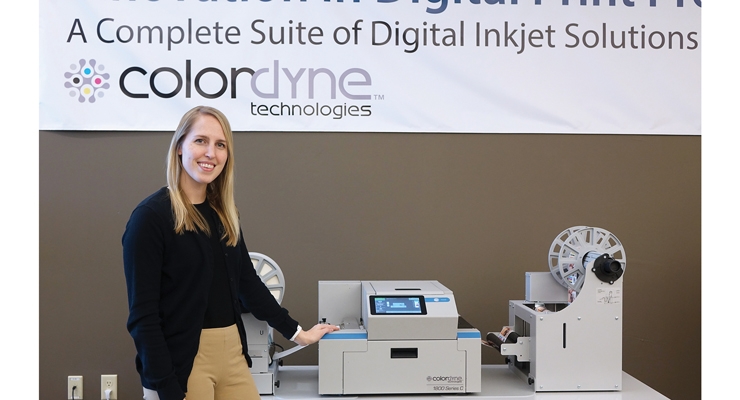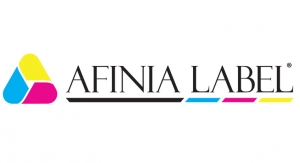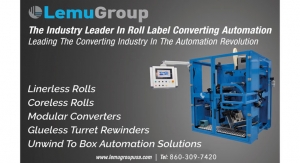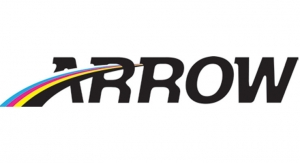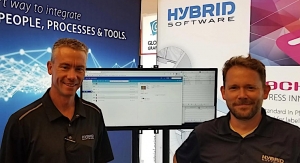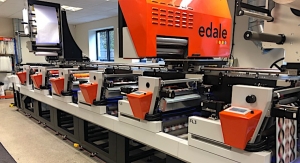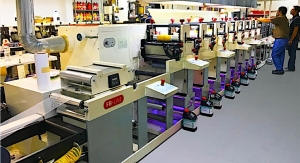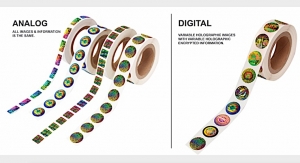Greg Hrinya, Editor12.22.20
As we approach 2021, Label & Narrow Web took a look back at which features piqued the most interest in 2020. Company profiles, new technologies, andenvironmental endeavors all cracked the list.
We look back at the top ranked magazine features that generated the biggest buzz:
10. Narrow Web Profile: Great Lakes Label
Tony Cook has taken the circuitous route to success. His journey has included a car wash pitstop, an exploratory trip to Europe, and finding his first press near a dumpster.
Today, Great Lakes Label has six presses and more than 60 employees. Cook operates out of a 26,000 square-foot facility, which the company moved to in 2005. Great Lakes Label is in the midst of a growth spurt, and Cook anticipates his most profitable year yet in 2020.
“For me, I was never going to quit,” says Cook. “That was never an option for me. ... I was going to make it work."
9. Companies To Watch: Iconex
Iconex, through organic growth and acquisitions, is poised for a bright future in the label printing and POS spaces.
“We provide solutions to help businesses improve processes, gain efficiencies and achieve their goals,” says Heather Hanlon, marketing and label business operations director at Iconex. “During the pandemic, we experienced a sharp initial decline in marketplace transactions in several key markets, however we’ve seen the situation stabilize over the last few months. We made swift and critical changes to manage the uncertainty for our customers and our co-workers. In parallel, some exciting new trends and opportunities have emerged that have Iconex excited for the future.”
8. Plate Mounting
The best plate technology and the newest state-of-the-art flexo press, along with multiple other consumables, will not amount to much if the plates are mounted incorrectly. Improper plate mounting leads to a loss in quality, downtime, and additional start-up waste associated with substrates, inks, energy, etc.
“Properly and accurately mounted plates, while making the right mounting tape selection based on the printing plate durometer, as well as the selected substrate, will have much more impact on print quality than most converters realize,” says Mark Andy's Bill Enright.
7. Narrow Web Profile: DWS Printing
There aren’t many companies – printing or otherwise – that boast the same kind of rich history as DWS Printing. The NY-based converter traces its origins back to the Civil War, but there is nothing old-school about DWS’ printing operations.
The company has been in business for more than 150 years, and the Staib family has it poised to thrive well into the future.
6. Digital Substrates
The evolution of digital printing has given converters a vast arsenal to better meet short-run demands. But as digital presses and printers become more prevalent, substrate suppliers must keep pace. Even the most technologically-advanced press cannot effectively serve brands without the proper materials.
5. Inspection Equipment
When printing labels, inspection might not be the process that jumps to the forefront of everyone’s mind – but the results can be monumental. A mistake on a label can run the gamut from insignificant to life altering. A mild smudge on a graphic might be unpleasant to the eye, but no harm will be done. A mistake that leads to an incorrect dose or direction on a pharmaceutical or food label, however, can be deadly.
“I find it difficult to understand how some label printers don’t use inspection,” says Robert Buongiorno, president, BST North America. “In the pharmaceutical world it’s not even an option, since a missing dot can make the difference from a .10% solution to a 10% solution.”
4. Sustainable Substrates
During L&NW’s trip to visit Rose City Label, the management team expressed the importance of partaking in sustainable activities. With a vast number of fragile tributaries and wetlands in the Pacific Northwest, Rose City Label wants to ensure that its materials don’t go floating down the local river.
Many converters are now priding themselves in being stewards of the environment. Of course, sustainable substrates play a huge role in this lofty endeavor.
According to a recent report from Asia Pulp & Paper (APP), noted in the Paper & Packaging Consumer Trends Report, consumers consider sustainability “among the most important factors when determining their spending habits.”
3. Beer Labels
The beer market is as dynamic and diverse as ever, with the labels to prove it. Shoppers walking through the crowded beer aisle of any retailer will see that the labels adorning the myriad bottles, cans and growlers are of all shapes and sizes, in colors that run the gamut (literally, the color gamut!). Much like its competitive alcohol space counterparts – wine and spirits – labels sell beer. Long gone are the days of most beer drinkers defaulting to their tried-and-true brands.
2. Flexo Press Economics
A flexo press is one of the most substantial investments a label converter will make. With flexography playing such a dominant role in the North American label market, choosing the right press can literally make or break a business.
Andre Blais, national account manager, Heidelberg-Gallus USA, says, “Flexo presses are running more efficiently and providing higher throughput. As converters are being pressured to lower costs to their customers, they are also facing price increases from their suppliers for materials, inks, plates, etc. With more efficient production, converters can produce more in a shorter period of time – helping lower their costs and giving them more press time to sell.”
1. Tabletop Digital Printers
As digital printing continues to be a hot topic in the label and packaging industry, it’s important to remember that the technology is not limited to full production presses. In fact, some of the most recent product launches include tabletop digital printers, which can help label printers in a wide range of markets.
“The benefits of a desktop label solution include an increase in productivity, a reduction in the cost and waste associated with pre‑printed labels and a reduction in process lead time,” explains Andy Scherz, senior product manager, Commercial Label Printers, Epson America.
We look back at the top ranked magazine features that generated the biggest buzz:
10. Narrow Web Profile: Great Lakes Label
Tony Cook has taken the circuitous route to success. His journey has included a car wash pitstop, an exploratory trip to Europe, and finding his first press near a dumpster.
Today, Great Lakes Label has six presses and more than 60 employees. Cook operates out of a 26,000 square-foot facility, which the company moved to in 2005. Great Lakes Label is in the midst of a growth spurt, and Cook anticipates his most profitable year yet in 2020.
“For me, I was never going to quit,” says Cook. “That was never an option for me. ... I was going to make it work."
9. Companies To Watch: Iconex
Iconex, through organic growth and acquisitions, is poised for a bright future in the label printing and POS spaces.
“We provide solutions to help businesses improve processes, gain efficiencies and achieve their goals,” says Heather Hanlon, marketing and label business operations director at Iconex. “During the pandemic, we experienced a sharp initial decline in marketplace transactions in several key markets, however we’ve seen the situation stabilize over the last few months. We made swift and critical changes to manage the uncertainty for our customers and our co-workers. In parallel, some exciting new trends and opportunities have emerged that have Iconex excited for the future.”
8. Plate Mounting
The best plate technology and the newest state-of-the-art flexo press, along with multiple other consumables, will not amount to much if the plates are mounted incorrectly. Improper plate mounting leads to a loss in quality, downtime, and additional start-up waste associated with substrates, inks, energy, etc.
“Properly and accurately mounted plates, while making the right mounting tape selection based on the printing plate durometer, as well as the selected substrate, will have much more impact on print quality than most converters realize,” says Mark Andy's Bill Enright.
7. Narrow Web Profile: DWS Printing
There aren’t many companies – printing or otherwise – that boast the same kind of rich history as DWS Printing. The NY-based converter traces its origins back to the Civil War, but there is nothing old-school about DWS’ printing operations.
The company has been in business for more than 150 years, and the Staib family has it poised to thrive well into the future.
6. Digital Substrates
The evolution of digital printing has given converters a vast arsenal to better meet short-run demands. But as digital presses and printers become more prevalent, substrate suppliers must keep pace. Even the most technologically-advanced press cannot effectively serve brands without the proper materials.
5. Inspection Equipment
When printing labels, inspection might not be the process that jumps to the forefront of everyone’s mind – but the results can be monumental. A mistake on a label can run the gamut from insignificant to life altering. A mild smudge on a graphic might be unpleasant to the eye, but no harm will be done. A mistake that leads to an incorrect dose or direction on a pharmaceutical or food label, however, can be deadly.
“I find it difficult to understand how some label printers don’t use inspection,” says Robert Buongiorno, president, BST North America. “In the pharmaceutical world it’s not even an option, since a missing dot can make the difference from a .10% solution to a 10% solution.”
4. Sustainable Substrates
During L&NW’s trip to visit Rose City Label, the management team expressed the importance of partaking in sustainable activities. With a vast number of fragile tributaries and wetlands in the Pacific Northwest, Rose City Label wants to ensure that its materials don’t go floating down the local river.
Many converters are now priding themselves in being stewards of the environment. Of course, sustainable substrates play a huge role in this lofty endeavor.
According to a recent report from Asia Pulp & Paper (APP), noted in the Paper & Packaging Consumer Trends Report, consumers consider sustainability “among the most important factors when determining their spending habits.”
3. Beer Labels
The beer market is as dynamic and diverse as ever, with the labels to prove it. Shoppers walking through the crowded beer aisle of any retailer will see that the labels adorning the myriad bottles, cans and growlers are of all shapes and sizes, in colors that run the gamut (literally, the color gamut!). Much like its competitive alcohol space counterparts – wine and spirits – labels sell beer. Long gone are the days of most beer drinkers defaulting to their tried-and-true brands.
2. Flexo Press Economics
A flexo press is one of the most substantial investments a label converter will make. With flexography playing such a dominant role in the North American label market, choosing the right press can literally make or break a business.
Andre Blais, national account manager, Heidelberg-Gallus USA, says, “Flexo presses are running more efficiently and providing higher throughput. As converters are being pressured to lower costs to their customers, they are also facing price increases from their suppliers for materials, inks, plates, etc. With more efficient production, converters can produce more in a shorter period of time – helping lower their costs and giving them more press time to sell.”
1. Tabletop Digital Printers
As digital printing continues to be a hot topic in the label and packaging industry, it’s important to remember that the technology is not limited to full production presses. In fact, some of the most recent product launches include tabletop digital printers, which can help label printers in a wide range of markets.
“The benefits of a desktop label solution include an increase in productivity, a reduction in the cost and waste associated with pre‑printed labels and a reduction in process lead time,” explains Andy Scherz, senior product manager, Commercial Label Printers, Epson America.

